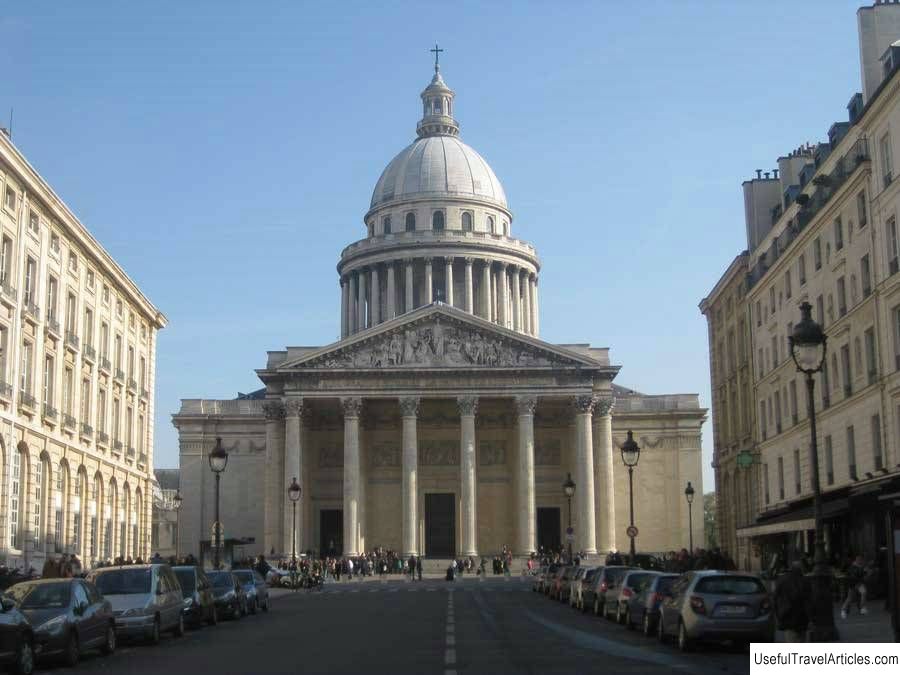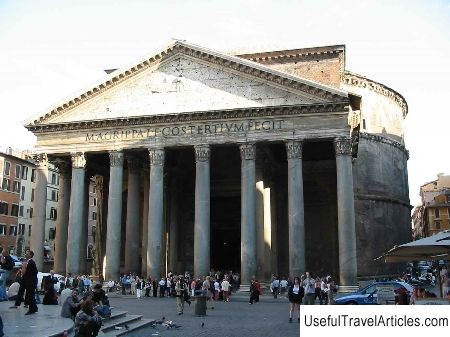Pantheon description and photos - France: Paris
Rating: 7,6/10 (100 votes) 
Pantheon description and photos - France: Paris. Detailed information about the attraction. Description, photographs and a map showing the nearest significant objects. The name in English is Pantheon. Photo & DescriptionThe Pantheon, the national mausoleum of prominent French citizens, is located in the Latin Quarter. Once there was an old church of the Abbey of Saint Genevieve, but by the middle of the 18th century it fell into disrepair. Gravely ill, Louis XV made a vow - if he recovers, he will restore the temple. In 1764, the recovered monarch laid the foundation stone of the new church with his own hands. The project involved the construction of a building resembling ancient temples. In plan, it was a Greek cross, covered in the center with a huge dome (23 meters in diameter). The dome was supported by light columns. Even before the completion of the construction, however, a miscalculation came to light: the light columns were not strong enough, they had to be strengthened. The building was completed in 1789, on the eve of the revolution. The new authorities, hostile to religion, called it the Pantheon and dedicated it to the great people of France. The ashes of Voltaire, Rousseau, Marat were buried here. A few years later, Marat's ashes were taken out. Under Napoleon, the church was returned to the status of a church, but in its crypt they continued to bury those who were famous for their talents or heroic deeds. After the Restoration, the church was richly decorated - at this time there were painted ceilings with paintings of French history, starting with Charlemagne. One of the paintings was planned to be dedicated to Bonaparte, but the time was not right, and the artist, Baron Gros, diplomatically depicted the return of the Bourbons - Louis XVI with his wife and son on the clouds. After the revolution of 1830, the church finally became the national Pantheon. In 1851, physicist Foucault conducted here a classic experiment with a pendulum under a vault, clearly demonstrating the rotation of the Earth. The ashes of many prominent people lie in the Pantheon: Victor Hugo, the Curies, Louis Braille, Emile Zola, Jean Jaures. Now the Pantheon is holding a grand nationwide action to attract donations for the restoration of the building. Any French citizen has the right to make a contribution and receive a tax deduction. The donor also receives, depending on the size of the contribution, a special status - from “companion of glory” to “friend and patron of the Pantheon.” Notes
            We also recommend reading Villa Sommi Picenardi description and photos - Italy: Cremona Topic: Pantheon description and photos - France: Paris. |




